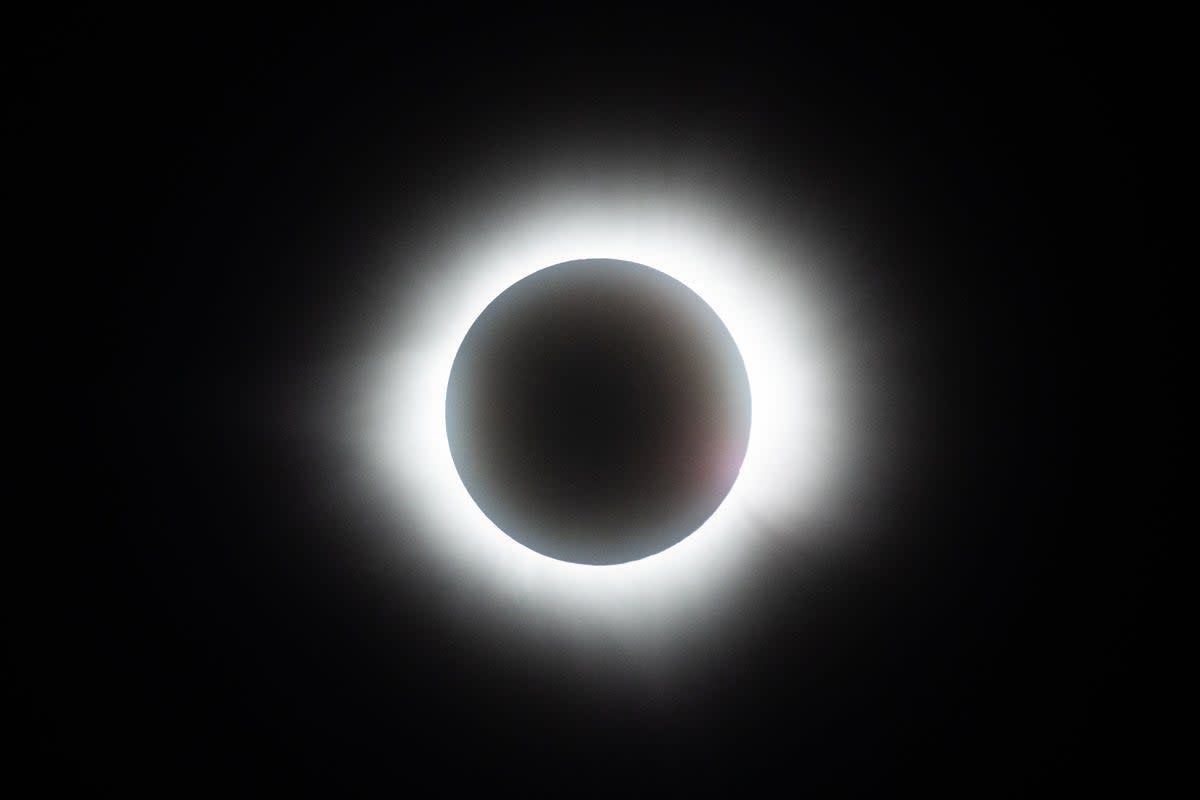US plunged into darkness by rare total solar eclipse

The US has been plunged into darkness as a total solar eclipse swept across America.
The celestial spectacle arrived in the US, at Eagle Pass in Texas, from Mexico. Its path then takes it to the north east corner of the country and onto Canada – though it could be visible elsewhere, such as the UK.
But many were unable to see the event because of clouds that covered much of the country, including many metro areas.
Meteorologists said however that some people may still be able to see at least some of the sight, if the clouds are high and thin. And everyone should be able to experience some of the dark and cold that arrives with totality.
During Monday’s full eclipse, the moon slipped right in front of the sun, entirely blocking it. The resulting twilight, with only the sun’s outer atmosphere or corona visible, would be long enough for birds and other animals to fall silent, and for planets, stars and maybe even a comet to pop out.
The out-of-sync darkness lasts up to 4 minutes, 28 seconds. That’s almost twice as long as it was during the U.S. coast-to-coast eclipse seven years ago because the moon is closer to Earth. It will be another 21 years before the U.S. sees another total solar eclipse on this scale.
It will take just 1 hour, 40 minutes for the moon’s shadow to race more than 4,000 miles (6,500 kilometers) across the continent.Eye protection is needed with proper eclipse glasses and filters to look at the sun, except when it ducks completely out of sight during an eclipse.
The path of totality — approximately 115 miles (185 kilometers) wide — encompasses several major cities this time, including Dallas; Indianapolis; Cleveland; Buffalo, New York; and Montreal. An estimated 44 million people live within the track, with a couple hundred million more within 200 miles (320 kilometers).
“This may be the most viewed astronomical event in history,” said National Air and Space Museum curator Teasel Muir-Harmony, standing outside the museum in Washingon, awaiting a partial eclipse.
Experts from NASA and scores of universities are posted along the route, poised to launch research rockets and weather balloons, and conduct experiments. The International Space Station’s seven astronauts also will be on the lookout, 270 miles (435 kilometers) up.
Additional reporting by agencies

 Yahoo News
Yahoo News 
